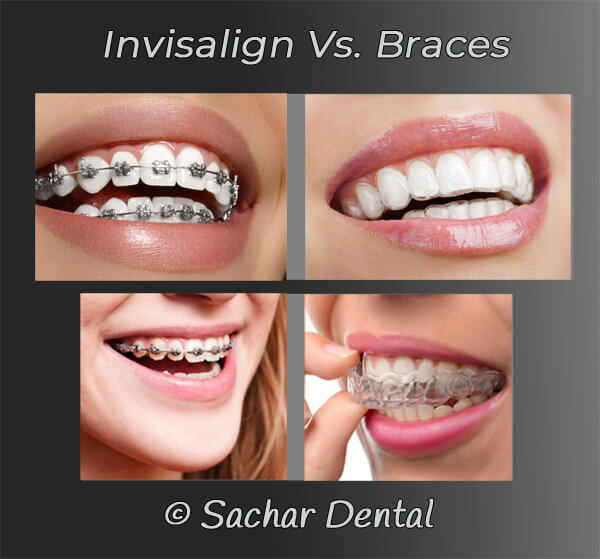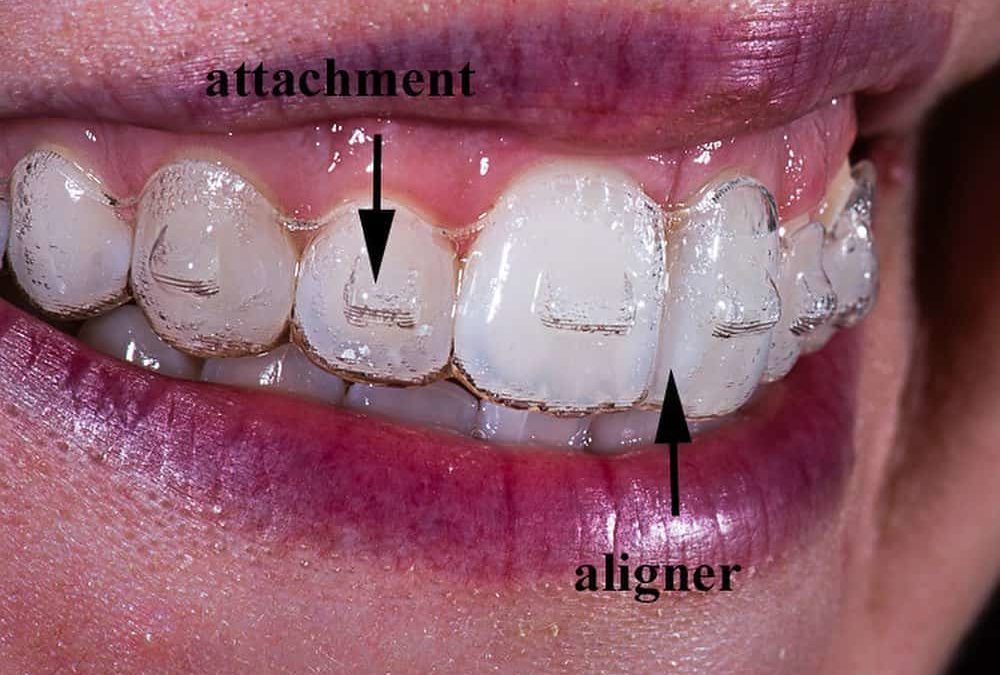Discover the Conveniences of Invisalign for a Perfect Smile Transformation
Discover the Conveniences of Invisalign for a Perfect Smile Transformation
Blog Article
Invisalign vs. Typical Dental braces: Which Option Is Right for You?
When considering orthodontic therapy, the option in between Invisalign and conventional dental braces provides a number of essential factors that merit mindful evaluation. Invisalign offers a discreet option with removable aligners, while typical dental braces provide an extra noticeable yet effective option for serious imbalance. Each choice incorporates distinct benefits and disadvantages connected to aesthetic appeals, convenience, therapy duration, and expense. Recognizing these subtleties is crucial for making an informed decision that straightens with your personal choices and way of life. The question remains: which option will ideal satisfy your orthodontic needs and expectations?
Review of Treatment Alternatives

On the other hand, conventional braces include steel braces and cords that are bound to the teeth. This approach applies continual stress gradually to attain positioning. While reliable for complex orthodontic issues, typical dental braces need routine sees for changes and can posture difficulties in keeping oral health because of the trouble of cleansing around cables and brackets.
Both options have their advantages, and the choice commonly depends upon particular dental conditions, lifestyle preferences, and individual conformity. Ultimately, consulting an orthodontic expert is critical for figuring out one of the most suitable treatment strategy customized to specific needs. Comprehending the nuances of each alternative can considerably influence the general success of orthodontic treatment.
Aesthetic Considerations
A considerable factor influencing the choice in between Invisalign and conventional braces is the aesthetic charm each therapy offers. Invisalign aligners are crafted from clear plastic, making them essentially undetectable when put on.
On the other hand, traditional braces include metal braces and cables, which can be more visible. While advancements in orthodontic technology have actually caused the development of smaller braces and colored elastics, traditional dental braces still maintain an even more conspicuous account. For some individuals, the exposure of dental braces might discourage them from looking for essential therapy.
Inevitably, the option in between Invisalign and standard dental braces may rest on personal preferences concerning aesthetics. Clients who prioritize discernment often lean toward Invisalign, while those that are less worried concerning exposure might select traditional dental braces. Comprehending the aesthetic implications of each alternative is critical for making an educated choice that lines up with one's way of living and choices.
Comfort and Convenience

In regards to benefit, Invisalign aligners are detachable, enabling patients to appreciate their favored foods without limitation and keep optimal dental advice health. Brushing and flossing are streamlined, as the aligners can be obtained during these routines, whereas typical dental braces need careful navigating around wires and braces.
Furthermore, Invisalign's progressive system enables less orthodontic brows through. Individuals normally receive multiple collections of aligners at the same time, which can simplify the treatment procedure and lower time invested in the orthodontist's chair. On the other hand, standard dental braces necessitate regular changes, making them less convenient for those with hectic timetables. Invisalign. Overall, the comfort and ease of Invisalign make it an attractive option for lots of individuals looking for orthodontic therapy.
Therapy Duration and Performance
While both Invisalign and standard dental braces work in correcting dental misalignments, the duration of treatment can differ significantly between the 2 alternatives. Typically, Invisalign therapy can take anywhere from 12 to 18 months, depending on the intricacy of the case. The clear aligners work by slowly changing teeth into their desired positions, and routine follow-ups with an orthodontist aid make certain development stays on course.
On the other hand, conventional dental braces often require a longer dedication, normally ranging from 18 months to three years. This is due to their fixed nature and the usage of brackets and cables, which can be a lot more efficient for complicated cases and serious imbalances (Invisalign). The therapy effectiveness of conventional braces is well-documented, as they enable for specific changes and higher control over tooth activity
Ultimately, the option in between Invisalign and typical braces may depend upon both the anticipated therapy duration and the specific dental issues available. Consulting with an orthodontist is important, as they can offer tailored his response recommendations based upon specific demands, making sure the chosen approach lines up with desired end results and durations.
Expense Comparison and Insurance Policy Options
Cost plays a considerable role in the decision-making procedure for individuals taking into consideration orthodontic treatment, whether selecting Invisalign or conventional dental braces. Typically, the price of Invisalign arrays from $3,000 to $8,000, while typical dental braces commonly set you back in between $2,000 and $6,000. Elements influencing these prices consist of the intricacy of the instance, the duration of treatment, and geographical place.
Insurance protection can significantly affect out-of-pocket expenses. Numerous dental insurance plans give partial protection for orthodontic treatments, but the specifics can vary commonly. It is critical for patients to examine their insurance plan to figure out the extent of coverage for either alternative. Generally, conventional braces might be a lot more regularly covered by insurance plans contrasted to Invisalign, which some insurance providers classify as a cosmetic procedure.
In addition, numerous orthodontic techniques provide flexible layaway plan, making both therapy choices a lot more easily accessible. Individuals ought to inquire about prospective funding options and price cuts for in advance settlements. Reviewing the total expense, consisting of insurance coverage advantages and settlement strategies, is essential for making an informed decision that straightens with both visual choices and budget considerations.

Verdict
In recap, the selection between Invisalign and traditional dental braces pivots on several elements, consisting of visual preferences, comfort, treatment duration, and expense. Invisalign provides a discreet, removable alternative that facilitates dental health and nutritional flexibility, while traditional dental braces might be more ideal for intricate dental issues and frequently come with a reduced rate point. Eventually, assessment with an orthodontist is necessary to examine specific circumstances and identify the most suitable treatment alternative for achieving ideal oral alignment.
When considering orthodontic treatment, the choice between Invisalign and traditional braces provides a number of crucial variables that warrant mindful examination.Comparing Invisalign and traditional dental braces exposes unique treatment choices for orthodontic correction.While both Invisalign and traditional braces are reliable Recommended Reading in dealing with oral misalignments, the period of therapy can differ substantially between the 2 choices.Cost plays a substantial role in the decision-making process for individuals considering orthodontic treatment, whether choosing for Invisalign or typical braces.In summary, the choice between Invisalign and conventional dental braces pivots on numerous aspects, consisting of visual choices, comfort, treatment period, and price.
Report this page